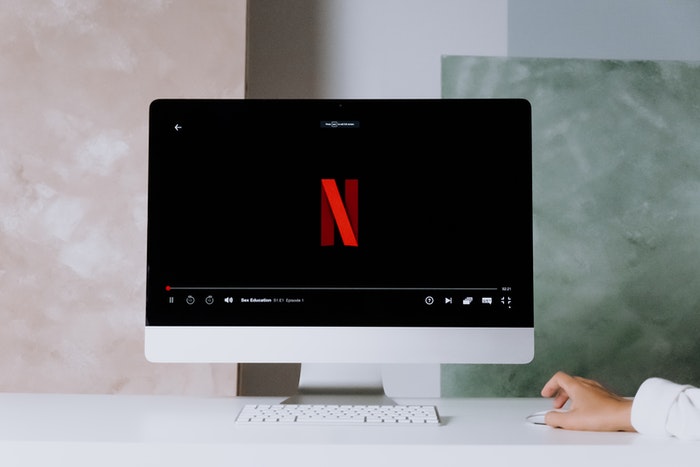
With the evolution of high-powered content streaming and IPTV solutions, cable and satellite television are quickly becoming ancient relics of the technological world. Fewer and fewer satellite dishes hang from houses, and fewer and fewer fiber optic cables run beneath living room rugs and city streets.
What has caused this grand transition of media consumption? Why are content providers and end users ditching their cable set top boxes for IPTV systems? And why do the questions “how to set up IPTV business” and “how to build an OTT platform” sound like good ones?
History gives us the answers to these questions. In this article, we’ll discuss the past, present, and future of IPTV, and how media technology advancement has spurred the emergence of IPTV for content providers and end users.
The Past

The Beginning of IPTV
The term IPTV was first used by the Precept Software Company in the mid-’90s as a delivery mechanism for low-quality audio and video on a multi-source network. After showing great potential for expansion and refinement, the software script and IPTV name trademark were purchased by Cisco Systems in 1998 (Cisco still possesses this trademark).
Once IPTV became more of a public fixture, radio broadcasters began to utilize IPTV technology for fast and secure broadcasts of live radio programming over the internet. This opened the door of creativity for other content providers to fulfill the potential of the IPTV platforms.
Potential Is Met with Problems
While there was no shortage of creative energy and potential surrounding IPTV, the evolution of IPTV technology and content distribution was held back by the lack of development for basic internet technology. Low bandwidth, slow internet connections, and a lack of infrastructure supporting IPTV in residences and businesses stifled IPTV progress, dooming it to be an expensive, niche technology for a number of years.
However, once higher bandwidth and faster internet speeds became more easily available to the general public, IPTV began its long journey toward commercial saturation on the world stage.
IPTV content providers in the UK were the first to commercialize regional IPTV streaming over a DSL Internet connection, which was quickly followed up by content providers in Canada and Sweden. After this point, the development of IPTV signal quality and features grew as fast as advancements in internet speed and bandwidth would allow.
The Present

Today’s IPTV Landscape
Today, there are as many as 100 million paid subscribers of IPTV services on the planet, with a global growth rate of nearly five percent per fiscal quarter. The large majority of IPTV subscribers are in Europe, Asia, and North America, using IPTV to watch on-demand movies and television shows, live streams of breaking news and sporting events, and enjoy converged social media/live/on-demand content.
IPTV for Transplants
Over 50 percent of IPTV subscribers come from outside of the United States—which shows how IPTV services have permeated non-American media culture instead of cable and satellite TV. In developing countries that are installing widespread internet and content infrastructure for their citizens, cable TV and traditional media often seem like low priorities because the most advanced technology of the present and future is centered around the Internet. This has led to the emergence of IPTV content providers across Europe, Asia, and the Middle East.
The beauty of IPTV is that content can be accessed anywhere with a strong internet connection. This makes people who move to a new country great candidates for IPTV subscriptions because they can easily subscribe to IPTV services of their home country and keep up on the latest hometown news, sports, and entertainment.
For those who immigrate from their homeland to the United States, IPTV has become a mainstay for content streaming that allows them to stay connected to their roots while utilizing the US’s relatively speedy internet infrastructure.
IPTV and Mass Media
Similarly, companies like Netflix and Hulu have revolutionized content delivery on IPTV and Over-The-Top (OTT) systems by providing end users with 1080p and 4K video resolution, creating engaging and award-winning original content (House of Cards, Orange Is The New Black, Stranger Things), and allowing for high-definition streaming on a wide variety of devices—all for a relatively affordable subscription price for users.
Recently, faster internet connections and advancements in data collection on viewing behaviors of consumers has allowed IPTV and OTT content providers to learn more about their audiences and tailor content based on their viewing habits. This data is how content providers like Netflix give you a running history of your previously watched shows and movies, and offers you a “Things You Might Enjoy” section based upon what you’ve previously viewed.
For content providers that rely on advertising for revenue, this data can be used to personalize advertisements based on viewers’ general interests, viewing habits, age, gender, and geographic location. It’s great for end users because they see advertisements that pertain to their interests, and even better for marketers and advertisers—this information helps them penetrate specific markets that are more likely to purchase their products and services, create more financially efficient advertising strategies, and ultimately, increase their bottom line.
What IPTV Means for Traditional TV
IPTV streaming services haven’t just grabbed a small share of the visual media industry—they’ve turned the industry on its head. According to a 2016 Leichtman Research Institute study, traditional TV subscribership peaked in the first fiscal quarter of 2012, and has since steadily declined with the emergence of IPTV and OTT streaming services; viewers subscribing to IPTV services over a broadband connection have increased at a similar rate during this period.
What Is the Cause for This Concurrent Migration of Subscribers?
Many media and technology experts offer a similar answer: IPTV offers content that is better tailored to consumer interests, provides more accessible content from a variety of devices and locations, and has a better value for the price. After all, wouldn’t you rather pay a small amount for a specific set of channels or content streams that fit your interests and can be viewed anywhere with an internet connection, or pay more for 150 cable channels that can only be watched in your home? (You will probably only watch two or three of those cable channels.)
Ultimately, IPTV has doomed traditional forms of visual media. It’s better, cheaper, more compelling, and more accessible—and the technology behind IPTV will only get better in the future.
The Future of IPTV

It’s incredibly difficult, if not impossible, to predict and analyze what the future may hold for IPTV infrastructure and content streaming. However, due to advancements in media technology and the creation of social media, media of all types are converging—or merging into seamless or less distinct forms of media—which is making the media world simpler, faster, and more connected than ever before. IPTV has experienced a certain degree of convergence already, and that convergence is likely to evolve. Perhaps live streaming and on-demand content on IPTV devices will become more closely connected with the social media world, allowing end users to publish content onto IPTV platforms or have real-time conversations about live content. Perhaps IPTV content will become more receptive to augmented and virtual reality technologies. Regardless of the possibilities, IPTV content will grow and change as quickly as the demands and habits of consumers do—and IPTV hardware and software companies will have to change and grow with them or die in the process.
Find a Home-Based Business to Start-Up >>> Hundreds of Business Listings.
















































